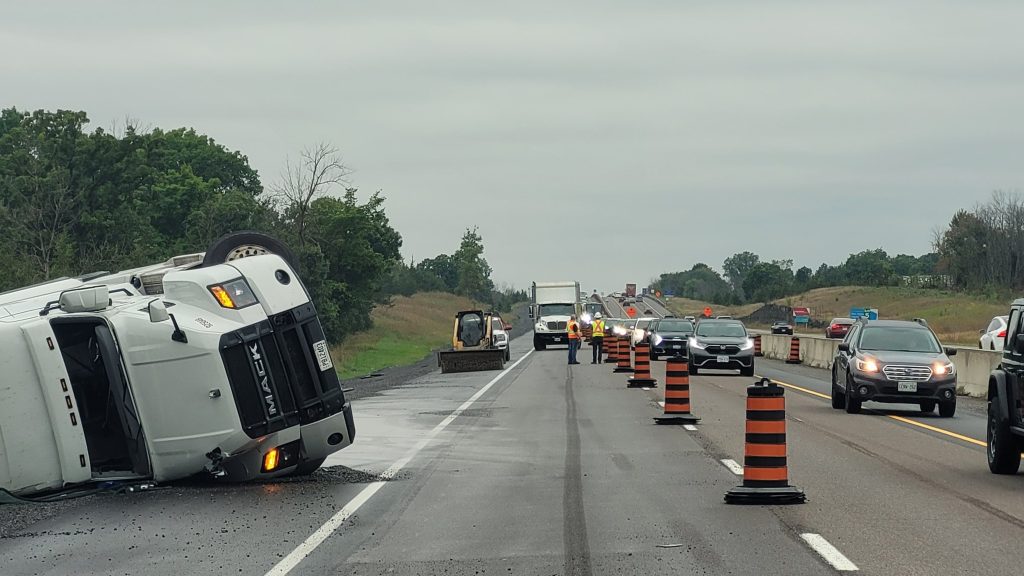Dangerous Weekend On Ontario Waters Leaves Five Dead
Posted July 28, 2008 12:00 pm.
This article is more than 5 years old.
On Monday, the distraught family of 16-year-old East York resident Sebastian Perez still struggled to comprehend the boy’s drowning, as did the families and friends of four other fatal drowning victims following a deadly and tragic weekend on Ontario waterways.
Perez, an avid skateboarder and athlete with an adventurous streak, was reported missing after going swimming at Wilson Falls on the North Branch of the Muskoka River Saturday. His body was found the next day.
Perez’ family says the area isn’t safe and having already suffered the loss of a son insist it should be blocked off to prevent other young people from making the same mistake and paying for it just as dearly.
“Fence it, all around as much as they can to prevent it,” implored Perez’s father in a CityNews Exclusive Monday.
“I hope that the city improves the signage of the area to basically avoid another catastrophe.”
Local police say swimming in the area is common, though during a summer with so much rain even familiar waters have become dangerous.
The Muskoka River was moving particularly fast that Saturday because officials had opened a dam upstream from the site, thus increasing water volume by about four times.
Not more than an hour after the teen, known to friends as “Sabby,” went missing, 20-year-old Matthew Jansen from the Niagara Region drowned after jumping off a rock face into white water at the Muskoka River’s South Branch.
And there was more. The body of a 30-year-old North York man was pulled from the waters around Healy Falls, near Campbellford, though it’s not clear exactly how he was pulled under.
Two other individuals also drowned in the province over the weekend, sparking a stern reminder from the Lifesaving Society and other water safety organizations.
“If you are in some water and you find there’s a current, the most important thing is to go with the current, don’t fight it because it’s a losing battle,” warned Barbara Byers.
Perez’s family says the teen’s funeral is planned for Saturday.
Water Safety Tips For Lakes and Rivers
Information courtesy The American Red Cross.
- Learn to swim. The best thing anyone can do to stay safe in and around the water is to learn to swim–this includes adults and children. The American Red Cross has swimming courses for people of any age and swimming ability. To enroll in swim course, contact your local Red Cross chapter.
- Select a supervised area. A trained lifeguard who can help in an emergency is the best safety factor. Even good swimmers can have an unexpected medical emergency in the water. Never swim alone.
- Select an area that is clean and well maintained. A clean bathhouse, clean restrooms, and a litter-free environment show the management’s concern for your health and safety.
- Select an area that has good water quality and safe natural conditions. Murky water, hidden underwater objects, unexpected drop-offs, and aquatic plant life are hazards. Water pollution can cause health problems for swimmers. Strong tides, big waves, and currents can turn an event that began as fun into a tragedy.
- Make sure the water is deep enough before entering headfirst. Too many swimmers are seriously injured every year by entering headfirst into water that is too shallow. A feet first entry is much safer than diving.
- Be sure rafts and docks are in good condition. A well-run open-water facility maintains its rafts and docks in good condition, with no loose boards or exposed nails. Never swim under a raft or dock. Always look before jumping off a dock or raft to be sure no one is in the way.
- Avoid drainage ditches and arroyos. Drainage ditches and arroyos for water run-off are not good places for swimming or playing in the water. After heavy rains, they can quickly change into raging rivers that can easily take a human life. Even the strongest swimmers are no match for the power of the water. Fast water and debris in the current make ditches and arroyos very dangerous.








